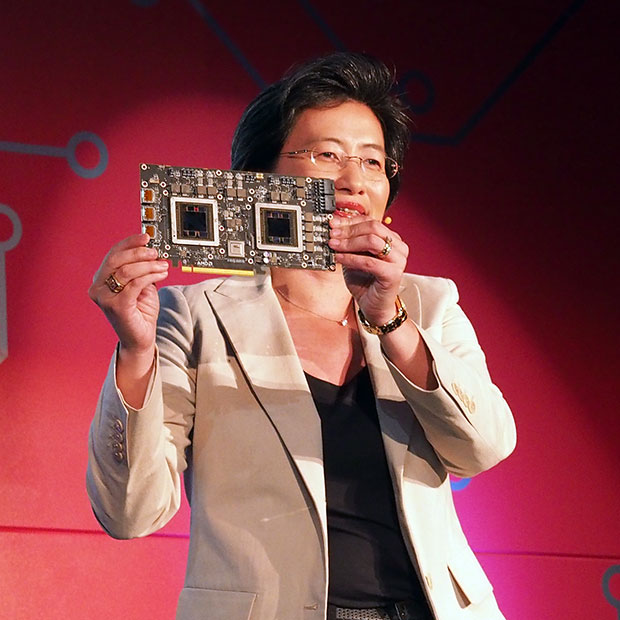Dual-GPU AMD R9 Fury X2 Delivers 12 TFLOPs Single Precision Compute Performance
In advance of what's sure to be a barrage of VR-related product hitting the market over the next couple of months, a VR-focused conference took place last week in Los Angeles. Appropriately called VRLA, this conference covered all things current and up-and-coming revolving around VR. It also included presentations from notable people in the industry, including AMD's Roy Taylor.
AMD had lots to talk about at VRLA, with the overall theme being that the company is ready to take this market head-on. It already offers graphics cards that are capable of delivering a compelling VR experience, and on the design side, it's playing a big role, too. In one part of Taylor's presentation, he talks about how his company's FirePro workstation cards are helping designers turn their creativity into virtual reality. Worthy of note is that modern FirePro cards are certified for use with the biggest content creation applications out there, including those from Autodesk, Adobe, Avid, and Sony. On the gaming side, Radeon GPUs are certified for use with Unreal, Crytek, Unity, HTC, and Oculus.
Given the incoming influx of VR releases, it seems likely that some companies are holding off on certain launches to coincide with the unleashed hype. Back in December, we did learn that AMD is holding off on the release of its dual-GPU Radeon R9 Fury X2 to make a bigger impact on VR, and it's recently been rumored that NVIDIA's first HBM2-equipped card could drop around April, which would also coincide with the launch of VR hardware, or at least come soon after.

It's been known for a while that AMD has been working on a dual-GPU card, with CEO Lisa Su showing a prototype off at its Fury press event last summer. Well, while it might come nearly a year after that announcement, we do now have an idea of what kind of performance it will bring to the table. At VRLA, Roy Taylor let it slip that the card will boast performance of 12 TFLOPs, single precision.
Whether this is impressive or not depends on the way you slice up the performance estimates. The Fury X, AMD's current top-end card, is spec'd at 8.6 TFLOPs, which means that the Fury X2 is just 40% faster (on paper). Likewise, the Fury X2 is 46% faster than the Nano. Things look a lot more impressive when we bring the regular Fury into things; in this comparison, the Fury X2 is 69% faster.
Potential pricing aside, 12 TFLOPs is a lot of horsepower. NVIDIA's GeForce TITAN X, for example, is just half that, at 6.1 TFLOPs. It's safe to say that the Fury X2, whenever it does get here, is not going to be inexpensive. Whether it will match the R9 295 X2's $1,500 price tag, we're not sure. If AMD released the card at $1,000, and had only the TITAN X as competition at the time, we could see it flying off of the shelves, especially to those yearning for killer VR experiences.
The year has only begun, but it looks like we have many exciting releases to look forward to.

